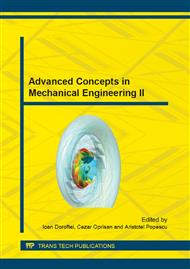p.268
p.274
p.283
p.289
p.295
p.301
p.307
p.313
p.319
Combined Cycle Units for Terrestrial Propulsion - Dimensional Approach
Abstract:
High performances and operation with low water consumption are mandatory but not sufficient conditions for the Combined Cycles Units implementation in the terrestrial propulsion systems field. There is another restrictive condition, which refers on the admitted size. That is why a dimensional analysis of the Combined Cycles Units is mandatory. In this view, paper presents the results of the dimensional analysis of a small scale Combined Cycles Unit for terrestrial propulsion, based on a two-pressure-levels Steam Cycle and operating with liquid fuel.
Info:
Periodical:
Pages:
295-300
Citation:
Online since:
October 2014
Price:
Сopyright:
© 2014 Trans Tech Publications Ltd. All Rights Reserved
Share:
Citation:


